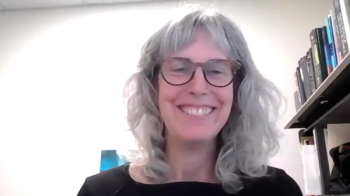
Study: Care Costs for R/R DLBCL Increase With Each Line of Therapy
New therapies are helping patients, but are also driving up overall costs of care.
Commercially insured patients with relapsed or refractory (R/R)
The report, which was published in the
Corresponding author Justin Gatwood, PhD, MPH, of the University of Tennessee Health Sciences Center, and colleagues, said most patients with DLBCL receive R-CHOP (rituximab [Rituxan] plus cyclophosphamide, doxorubicin, vincristine [Oncovin], and prednisone) in the first-line setting, though the Pola-R-CHP regimen of rituximab, cyclophosphamide, doxorubicin and prednisone has also been approved in recent years in the United States and Europe.
“However, in the second line of treatment (LoT) and beyond, there is no universal standard of care for relapsed/refractory DLBCL,” they noted.
For some patients, stem cell transplantation and chimeric antigen receptor (CAR) T-cell therapy are options, though many patients are not eligible for those therapies. A number of new treatment options have been developed in recent years, Gatwood and colleagues said, including CAR T cells, anti-CD19 monoclonal antibodies, bispecific antibodies, and antibody-drug conjugates. Those new treatment options have provided new therapeutic avenues to patients experiencing R/R DLBCL, but the authors said they have also helped increase the overall cost of care to more than $100,000 for many patients, and far above that amount in cases in which patients were treated with CAR T cells. Yet, Gatwood and colleagues said it may well be that such estimates are underestimates.
They noted a 2021 study of 15 million commercially insured patients suggested that the median total cost of care for an episode of CAR T-cell therapy was more than $600,000, and that 12% of episodes had a total cost of care in excess of $1 million.2
Given the wide variety of new therapies and associated treatment costs, Gatwood and colleagues conducted an analysis of the real-world total cost of care for patients with R/R DLBCL, stratifying their results by line of therapy.
They used a database of commercial medical claims to pull cost information for adult patients with R/R DLBCL who were treated with R-CHOP or a similar regimen as their first-line therapy. The data covered the years from 2015 to 2021, and a sensitivity analysis was performed to evaluate any impacts of the COVID-19 pandemic.
The researchers identified a total of 310 patients who had received second-or-later lines of treatment to include in the analysis. The average total cost of care per patient per month was $40,604 for second-line therapies, but it increased to $48,630 in the third line and $59,499 by the fourth line of treatment. The authors said inpatient care costs were the highest percentage of those costs, followed by outpatient care and pharmacy costs. The sensitivity analysis suggested the pandemic did not confound the results.
Gatwood and colleagues wrote that the data show that costs of care have significantly increased with time, perhaps as a result of novel therapies and the increased use of CAR T cells and stem cell transplantation. They said these cost data show better options are needed both to treat patients and to minimize the economic burden.
“Given the vast economic burden to healthcare systems of using DLBCL therapies in the second line and beyond, there is a clear need for novel treatments that reduce the need for subsequent LoTs and their associated costs,” they said. “This can potentially be achieved by reducing the proportion of patients who do not respond to, or experience early relapse after, first-line therapy and/or by avoiding or delaying early relapse.”
Gatwood and colleagues said their analysis had limitations. For instance, an algorithm was used to process the claims, and they said it could be that some lines-of-therapy were misclassified. They noted that the data do not include related costs, such as transportation, nor do they reflect the costs for patients who are not commercially insured.
References
1. Gatwood J, Masaquel A, Fox D, et al. Real-world total cost of care by line of therapy in relapsed/refractory diffuse large B-Cell lymphoma. J Med Econ. Published online April 30, 2024. doi:10.1080/13696998.2024.2349472
2. Sahli B, Eckwright D, Darling E, Gleason PP, Leach J. Chimeric antigen receptor T-cell (CAR-T) therapy real-world assessment of total cost of care and clinical events for the treatment of relapsed or refractory lymphoma among 15 million commercially insured members. Poster presented at: Academy of Managed Care Pharmacists (AMCP) Annual Meeting; April 13, 2021.
Newsletter
Stay ahead of policy, cost, and value—subscribe to AJMC for expert insights at the intersection of clinical care and health economics.














































